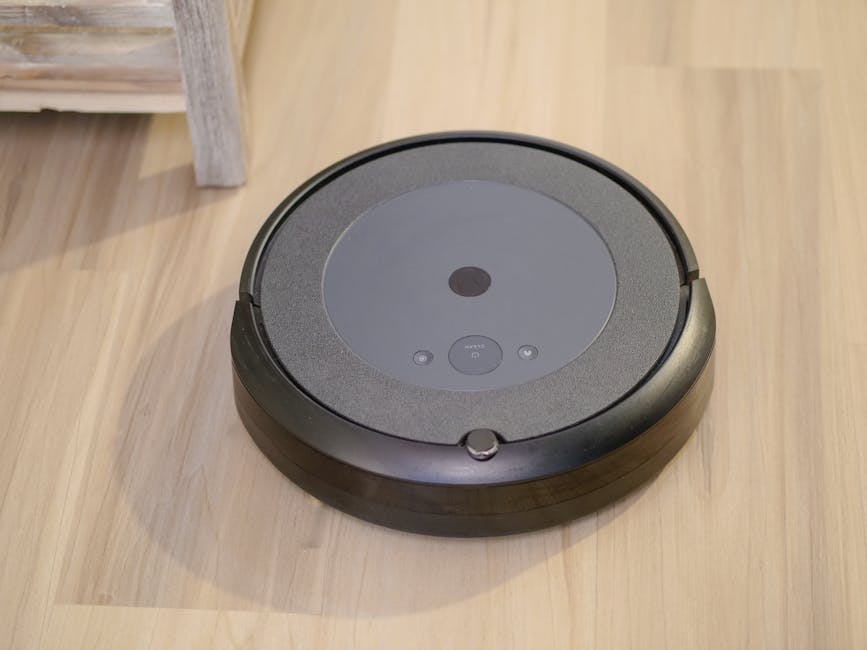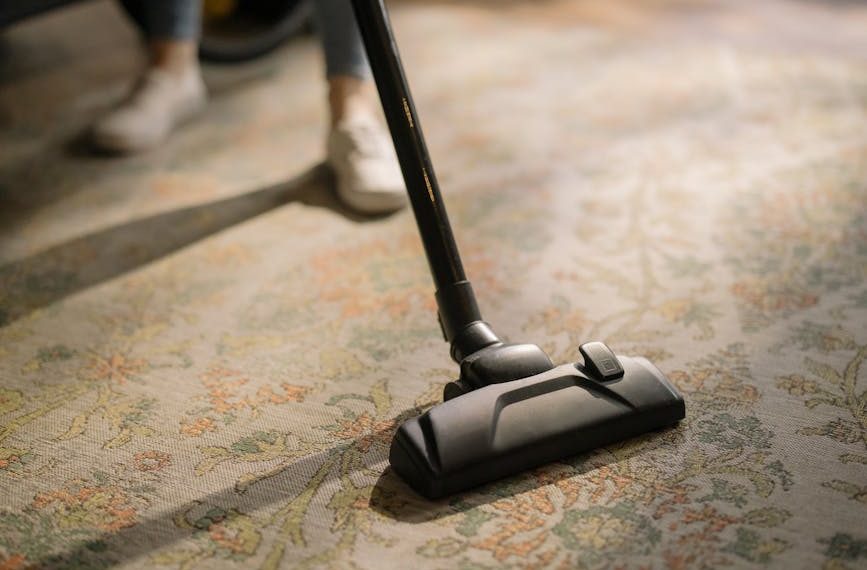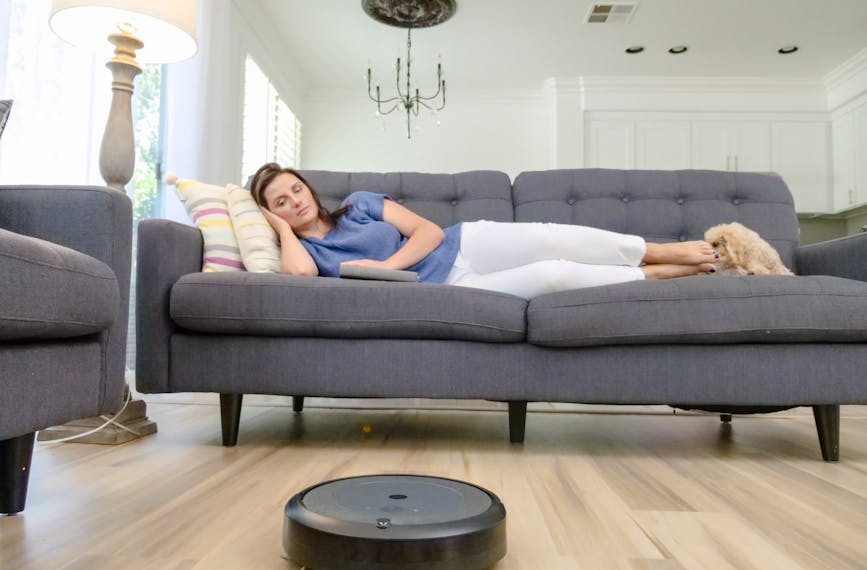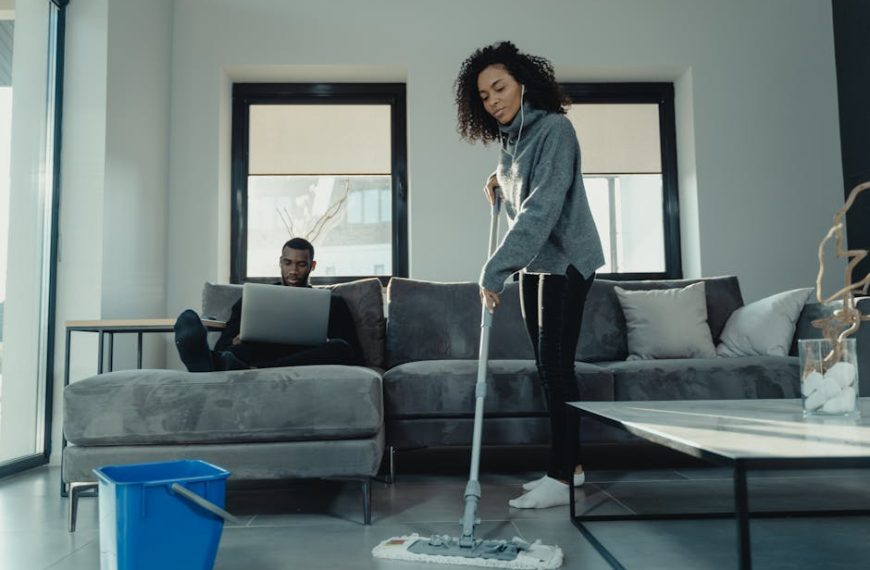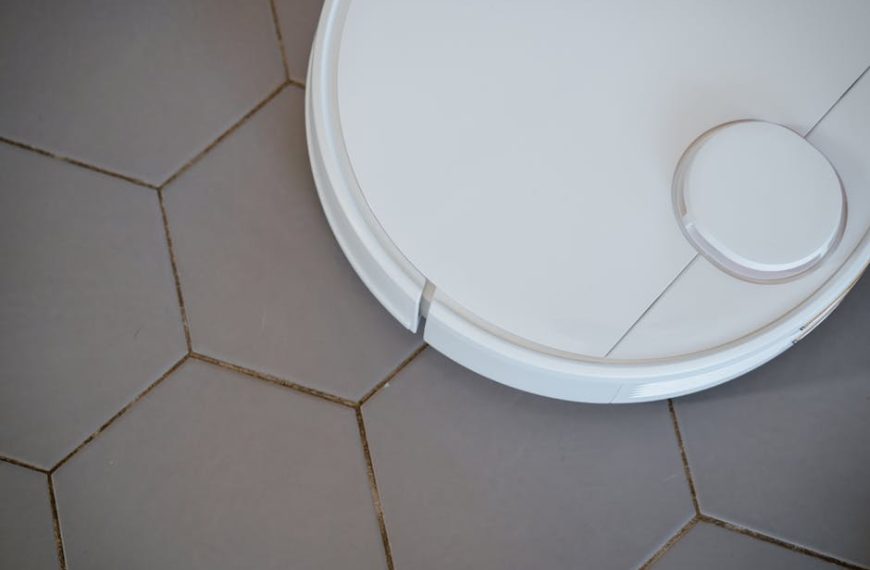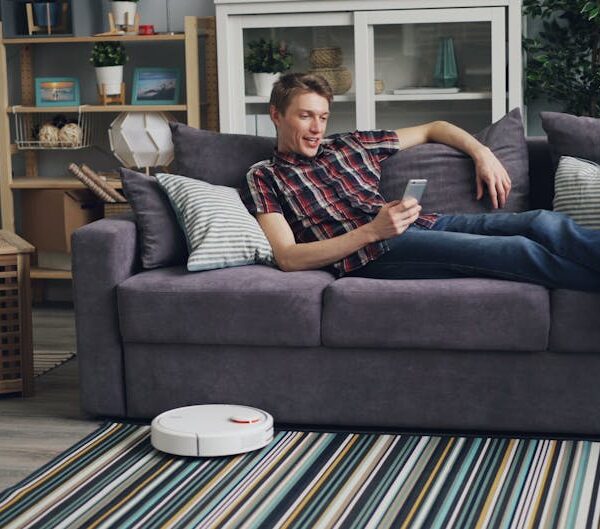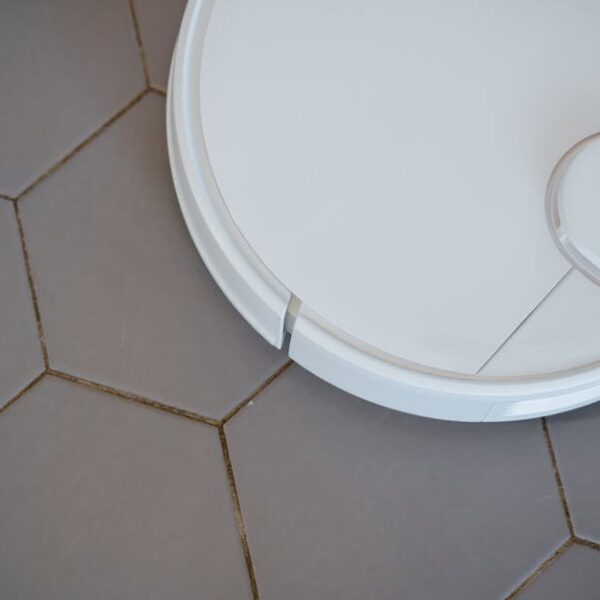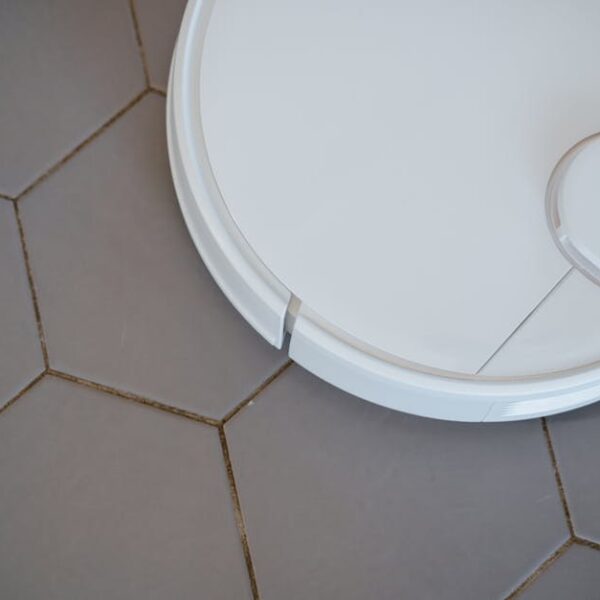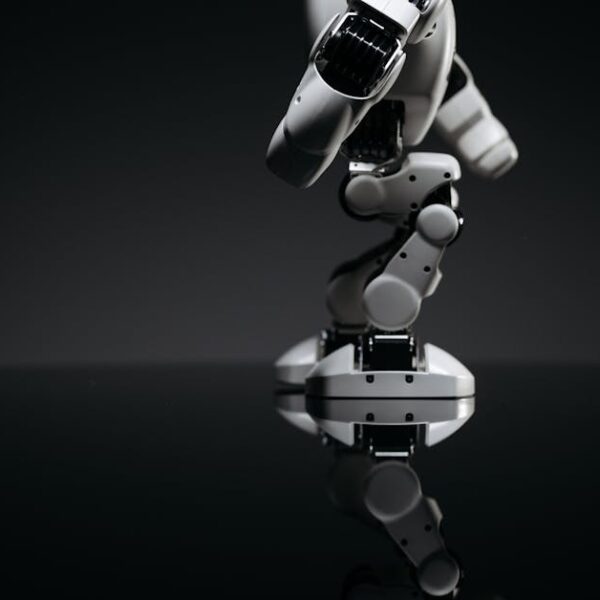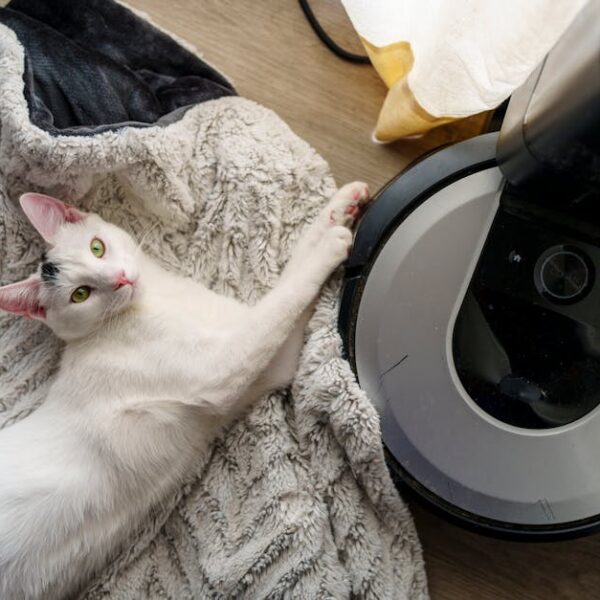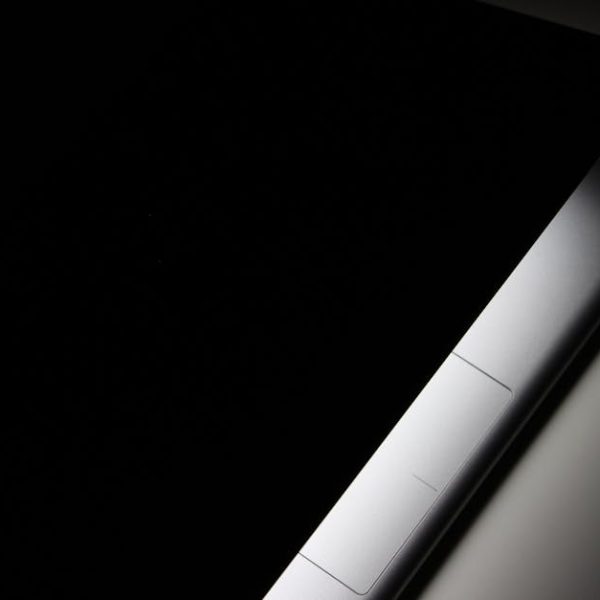A Roomba is much more than a simple vacuum – it’s a feat of mechanical and artificial intelligence design. To understand this robot’s performance, we first need to break down its individual components.
First, the Roomba boasts a collection of sensors. These sensors include cliff sensors that prevent accidental drop-offs, infrared sensors to navigate around a room, and tactile sensors to detect when it encounters an obstacle. It’s practically a little sensor-filled machine!
Pro Tip:
Watch your Roomba ‘at work’ to gain a better sense of what these sensors do.
In addition to these sensors, the Roomba has three main operating parts: its wheels, brushes, and vacuum system. These are essential to its movement and cleaning capabilities.
Best Practice:
Maintain these components by cleaning them regularly, thus ensuring you don’t shorten your Roomba’s lifespan.
Roomba’s Navigation System: Understanding the Concept
Contrary to popular belief, a Roomba does not clean rooms randomly. Roombas use a responsive cleaning algorithm, otherwise known as iAdapt technology, to navigate through a room dynamically.
Using its sensors, it can detect obstacles and maneuver around them, preventing collisions and injuries. The cliff sensors alert it when it’s close to edges or stairs, prompting it to change direction.
Here are a few advantages and disadvantages to keep in mind about Roomba’s navigation system:
*Pros:*
- Efficiently cleans multiple room layouts.
- Detects obstacles before collisions occur.
- Changes direction upon approaching cliffs/stairs.
*Cons:*
- May get stuck in cluttered areas.
- Sometimes misses spots due to random algorithm.
The Roomba’s Cleaning Process Unveiled
The Roomba has a three-stage cleaning process. First, its side brush loosens debris from edges and corners. Next, two counter-rotating brushes pick up dirt, dust, and hair. Finally, a vacuum sucks the debris into the bin.
Current Roomba Models Comparison
| Roomba Model | Cleaning Capabilities |
|---|---|
| Roomba 600 Series | Adept at cleaning carpet, hardwood, and tile with two-stage cleaning. |
| Roomba i7/i7+ | Boasts ten times the power of 600 series and can empty its bin automatically. |
Best Practice:
To effectively clean, schedule your Roomba to run once a day. This frequency will help to keep dust and allergen levels low.
Can I Use Voice Commands with Google Home to Control My Roomba?
Yes, you can use voice commands for effortless cleaning with Google Home to control your Roomba. Simply link your Roomba device to the Google Home app, and you can command your vacuum to start, stop, or return to its dock using convenient voice commands. Enjoy a tidier home with minimal effort!
All About Power: Charging and Managing a Roomba
The Roomba is designed to return to its Home Base to recharge after every cleaning cycle, or when its battery is low. It accomplishes this through its intelligent navigation system, which recognizes the signal emitted by the dock.
Pro Tip:
Keep your Roomba’s charging dock in an open, accessible area to improve its docking success.
Knowing the basics of how a Roomba works can greatly enhance your user experience. It’s an exceptional tool for maintaining a clean home, particularly when you understand its operating nuances, strengths, and potential weak points. Stay tuned for some final thoughts on programming and running your Roomba efficiently. Don’t forget to always refer to the checklist and pro tips for practical and actionable advice.
Running a Roomba: Programming and Hands-on Operation
To make the most out of your Roomba, understanding how to program and run it is essential. This little robot is designed to make your cleaning tasks simpler – and it does just that – if you know how to use it properly.
A Roomba can be scheduled to clean up to seven times per week. To program your Roomba, simply press the Schedule button, select the days and times you want your Roomba to clean, and then press OK to save your preferences.
Another handy feature worth mentioning is the ability to start, stop, and pause your Roomba during its cleaning cycle. If you need to pause its operation, simply press the Clean button once. To restart, press the button again. To stop the cleaning cycle completely, press and hold the Clean button until the lights on the Roomba turn off.
Pro Tip:
Try not to interrupt your Roomba’s cleaning cycle too frequently – it works best when it can complete its programmed cleaning cycle.
Now, let’s compare the ease of programming across different Roomba models.
Comparison of Programming Ease Across Roomba Models
| Roomba Model | Programming Ease |
|---|---|
| Roomba 600 Series | Programmable but lacks compatibility with mobile app or voice command systems. |
| Roomba i7/i7+ | Features enhanced user interface, with compatibility for mobile app and voice command programming. |
Knowing your Roomba and understanding how to program it can work wonders in terms of cleaning effectiveness and ease of use. Armed with these insights, you can unquestionably keep your living space sparkly clean with minimal effort.
Final Thoughts
From its intricate mechanics to its sophisticated programming, the Roomba is revolutionizing home cleaning. It’s not just a robot – it’s your handy companion, taking care of an essential household chore so you can invest your time elsewhere. Understanding just how this phenomenal robot works can significantly optimize your cleaning process and ensure that the Roomba is working hard for you.
Remember, keeping a Roomba running smoothly goes beyond dusting and emptying the bin now and then. Regularly check and maintain the sensors, ensure the charging dock is easily accessible, and – above all – make sure you’ve set those cleaning schedules just right. Your Roomba is here to serve – let it do its job and enjoy the clean, dust-free, and allergen-free living space that ensues.
Stay focused, keep learning, and embrace the wonders of robotic cleaning with the Roomba!
Key Takeaway:
- Roomba design includes multiple sensors and components that allow it to move, detect obstacles, avoid drops, and clean surfaces effectively.
- Roombas use a responsive cleaning algorithm, or iAdapt tech, to navigate through rooms dynamically.
- The Roomba’s three-stage cleaning process comprises of a side brush for preliminary dusting, two counter-rotating brushes for sweeping, and a vacuum system for suction.
- Roomba models differ in their cleaning capabilities; for instance, the i7/i7+ models possess ten times the power of the 600 series and can empty their bin automatically.
- Programming and scheduling Roombas properly can enhance their cleaning effectiveness and ease of use.
Roomba revolutionizes the way we clean our homes, and understanding its operation can truly optimize your cleaning process. Enjoy your clean, dust-free space with this fantastic robot! You’re now equipped with the knowledge to get the most out of your Roomba.
FAQs
Q: Can Roomba work on all floor types?
A: Yes, the Roomba is designed to clean a variety of floor types, from hardwoods to carpets and tiles.
Q: What happens if my Roomba’s sensors are dirty?
A: Dirty sensors can hinder your Roomba’s navigation and cleaning performance. It’s best to clean them periodically for optimal use.
Q: How do I know when the Roomba has fully charged?
A: Most Roomba models have an indicator that lights up or changes color when it’s fully charged. Refer to the manual for model-specific instructions.
Q: Can I control my Roomba with a mobile app or voice command?
A: Some Roomba models, like the i7/i7+, are compatible with a mobile app and certain voice command systems.
Q: How often should I schedule my Roomba to clean?
A: It’s best to schedule your Roomba to clean once a day to maintain low dust and allergen levels. Remember, this may vary depending on the amount of activity and traffic in your home.
Remember to share this article with fellow Roomba users, and explore more posts for handy tips on home appliances and more!
